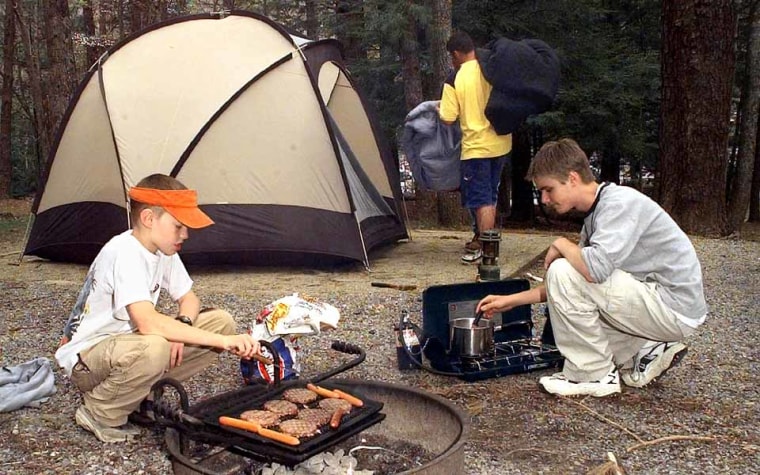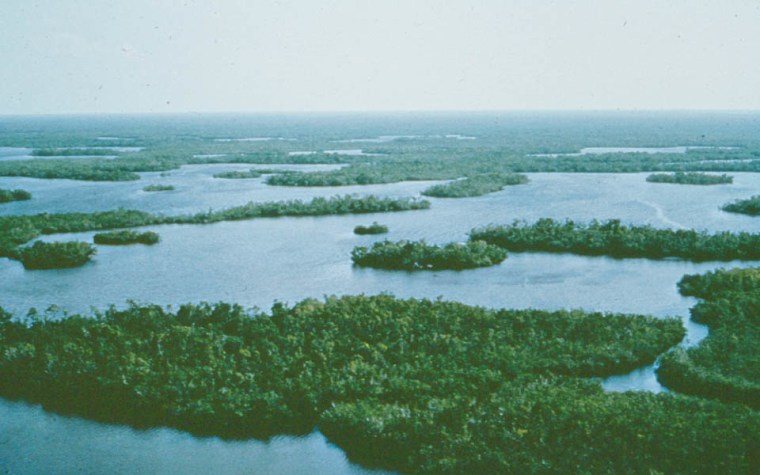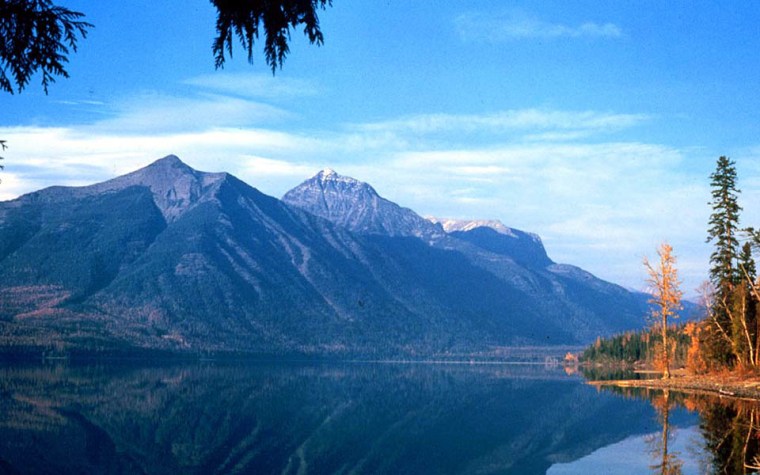When President Ulysses S. Grant declared Yellowstone to be the word’s first national park in 1872, he promised that its legacy would be for the "benefit and enjoyment of the people." Generations of travelers have since made the trek to Yellowstone and the 387 other national parks to experience America's history and natural wonders. But this summer, facing tighter budgets and less funding to hire seasonal rangers many national parks are struggling to provide the programs and services that visitors expect.
In recent months, a series of memos and congressional hearings have fueled speculation over what services parks will offer this summer. A Feb. 20 memo circulated among superintendents of Northeast regional National Parks suggested that individual parks consider cutting operating hours and services to negotiate budget constraints. A month later, speaking before a congressional subcommittee, National Park Service Director Fran Mainella told House representatives that there would be no major cuts to park services or hours. As a preventative measure, the agency suspended all foreign travel, approximately $600,000 a year, and cut 10 percent from domestic travel spending. But those measures only freed up approximately $5 million towards an operations budget of $1.6 billion.
As the summer season approaches, whether or not these changes have solved the National Park Service’s budget problems, and whether or not visitors will be affected, remains the question.
“When people visit the parks, they need to be aware that the level of services and level of protection will not be as they should be,” said Ron Tipton, a senior vice president at the National Parks Conservation Association, a non-profit parks advocacy group. “We are going to see a lot of decisions made at specific parks in the next month.”
Budgeting resources
Increased costs related to national security, wildfires and natural disaster cleanup are contributing to budget troubles for the National Parks Service. The National Parks Conservation Association, the Campaign to Protect America’s Lands, the Coalition of Concerned National Park Retirees, and the Association of National Park Rangers have collectively spoken out, stating that national parks are underfunded by nearly $600 million a year.
On the other side of the story, Congress has criticized the Parks administrators for mismanaging funds and there have been problems with the private organizations that are supplementing the parks' budgets. When the National Parks relied on a private group to handle the reopening of the Statue of Liberty, it became clear that the National Park Service had not been asking Congress for the necessary funding for its operations (and there have been further allegations about misappropriation of donated funds; click here to read a full article on that).
The result of all this? Across the board, the National Parks have not been able to hire as many seasonal employees or fill position vacancies. With fewer rangers this summer, say critics, there is a greater chance that parks will provide fewer educational programs, less frequent maintenance and custodial care, and insufficient patrols to protect the safety of both park visitors and the parks’ natural resources.
National Parks representatives assert that whatever changes occur at the parks will be minimal, and are not likely to affect visitors. “We have advised parks superintendents to do what they can to maintain the same or similar level of experience to previous years,” said Al Nash, National Parks Service spokesman. “Visitors to the parks probably will not notice any changes.”
A park-by-park assessment
But is Mr. Nash right? The National Parks are expecting over 270 million visitors in 2004, with the majority arriving during the summer months. From Yellowstone to Acadia, National Parks representatives admit that parks are facing challenges this year with limited funds.

As a result of fewer rangers, Miller adds: “Visitors are going to see some deterioration in trail upkeep. Mostly, it’s not going to be very visible. We have 19 permanent positions, 12 of which are in maintenance, that are not going to be filled.” Great Smoky Mountains National Park also provides co-curricular educational programs for school children in grades K-8. While Miller does not anticipate any cuts in educational programs within the parks, the “Parks as Classrooms” outreach program, where rangers visit local schools particularly in lower-income areas, will not be offered this fall.
At Maine’s Acadia National Park, budget concerns have delayed the scheduling of normally offered programs until mid- to late-May, according to Acadia information ranger Wanda Moran. This means that vacationers planning to visit will have to wait much longer than usual to find out which programs will be offerred during their vacation. Anticipated changes include fewer ranger-led programs, shorter visitor center hours, and an increased entrance fee from $10 to $20 for a seven-day pass.
At Olympic National Park in Washington State, visitor center hours have been reduced for the first time in the park’s history. “We don’t anticipate hiring as many seasonal rangers, but this has not yet been finalized. There will probably be cutbacks in the numbers of programs offered,” said Barb Maynes, the park’s public information officer, “The underlying message is that we are doing our best to provide visitors with the best experience possible.”
At Yellowstone no changes will take place, according to park spokesperson Cheryl Matthews. Matthews does admit that the park is “streamlining existing operations” and has had to depend upon non-appropriated funds from “friends” groups like the Yellowstone Park Foundation and the Yellowstone Association. Additionally, volunteers will serve as support staff throughout the park, at visitor centers and campgrounds.

The Everglades National Park in Florida has its highest number of visitors during the winter season, and therefore could be the best indicator of how the rest of the parks will fare this summer. According to Bill Wade, coordinator of the Coalition of Concerned National Parks Retirees, The Everglades was only able to fill 15 of the 23 permanent positions in its interpretive ranger division, and as a result offered far fewer than the average 100 programs a week. “There is every indication that next summer will be worse,” said Wade, adding “You can’t rely on volunteers to be effective if you don’t have enough experienced people to train them.”
Additionally, Wade cautions that with fewer rangers, emergency services will be affected at parks nationwide. “The likelihood is that response time will take a little longer than previous years.”
A growing trend
Jim Yenckel, retired chief travel writer for The Washington Post, is a seasoned visitor to National Parks. “The National Parks are some of—if not the most—historic, most scenic places in the country. And you go to these parks and they just look shabby.” Yenckel has visited “at least half” of all of the National Parks, and recalls a discouraging visit to Black Canyon of Gunnison National Park in Colorado two years ago. “We went to the visitors’ center on a Wednesday at 2 pm, when you would think that it would be open, and there was a sign posted on the door saying it was closed specifically for budget reasons.”
“The parks are lovely, but if you to go to the parks, you know they don’t look their best,” said Yenkle, describing overflowing trashcans, weatherworn signs and restrooms without toilet paper. “This has been a trend that the parks have been getting shabbier for some time.”
Critics argue that the measures taken by the National Park Service to free up funds are not enough. “These are all band- aids, all actions taken to specific requests, not long-term solutions,” said Ken Mabery, president of the Association of National Park Rangers. “Our service season is being quietly shortened. Service hours are being quietly diminished. Those things are being quietly done so that visitors who know from previous experience or even from looking at the website will be surprised when they show up and services are not available.”
As parks are told to do more with less, concerns grow for the future of the parks system.
Less frequently cleaned restrooms, deferred building maintenance and landscaping are some of the symptoms visitors may notice this summer, but Mabery warns that with fewer rangers patrolling park grounds, parks may face irreversible harm. “We are the nation’s home. We are responsible for protecting a variety of resources. If we don’t have the patrols, they could go away. We need to be able to ensure that people stay on the trails, or our resources could be trampled out of existence.”
“We cannot take a defensive stance on this,” added Mabery, reflecting on the quick-fix measures taken by Congress and the NPS. “Part of the reason we need to be proactive is to preserve the parks for future generations.”
